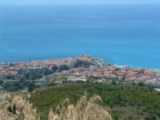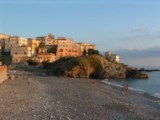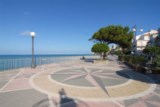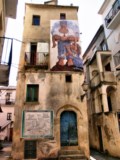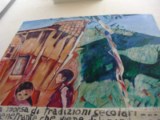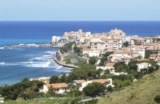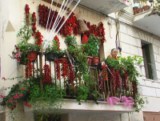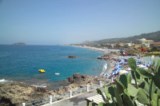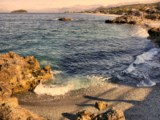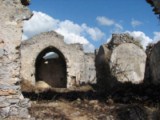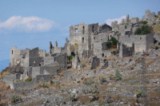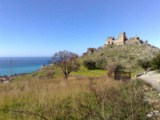|
DIAMANTE - CALABRIA - SOUTH ITALY
HOTEL ROOMS ACCOMMODATIONS OFFERS IN DIAMANTE & CIRELLA
WHERE TO EAT WHERE TO HAVE FUN EXCURSIONS SPONSORS Diamante, also known as the "Gem of the Mediterranean", and it's fraction, Cirella, can both boast a particularly long summer going from April straight through to October, thanks to their wonderful position in the heart of the Mediterranean.
It is a pleasing feeling to walk through the tiny aisles of Diamante's "old town", discovering day by day, or under the romantic street lights at night, the wealth of art that this town has inherited, being known internationally for its 130 murales. As you wind your way in and around this quaint little village you will unexpectedly find yourself face to face with a host of brightly coloured murals decorating the walls of almost all the houses of the historic area. "You'll find yourself looking through an open window, into a room just to achieve that it's a painting or admiring a frame of the picturesque blue sea to finally realise that it really is the Tyrrhenian in it's peaceful position." These are the works of famous artists from all over Europe who began coming here in 1981 thanks to an idea of the painter Nani Razzetti, ranking Diamante first for exhibiting the highest number of works in the Association of Municipalities for "Painted Towns". Cirella is situated on a promontory south of the plain where ancient Laos rose and is currently a hamlet of the jewel of the Mediterranean Diamante. It enjoys the presence of the "Island of Cirella" where a sentinel tower was built in ancient time to protect the town from invaders coming from sea.
The "old" part of Cirella, preserves rubbles of "Cirella Antica", where the rests of the Church and Castle still show some frescoes of the 15th century. The Mausoleum, is said to date back to the Roman Imperial Period, its remains are numerous but not enough to allow any accurate dating. This round shaped pagan temple was built out of bricks and is situated on the town heights in the country side. In the Middle Ages it was used as a church and then as a warehouse for agricultural produce. "Cedro", a bitter fruit that only grows on the North Tyrrhenian Coast of Calabria (and no where else in the world), and that takes the shape of a huge green lemon, is cultivated all over the countryside around Diamante and Cirella. Probably thanks to the soil that is ligumuso (impure) and full of shingle carried by the rivers, this area also guarantees a production of spirits, essences and candied fruits of high quality. The Cedro is the principal ingredient to make a Southern Italian typical liquor that takes the name of this rare fruit. |
||||||||||||||||


